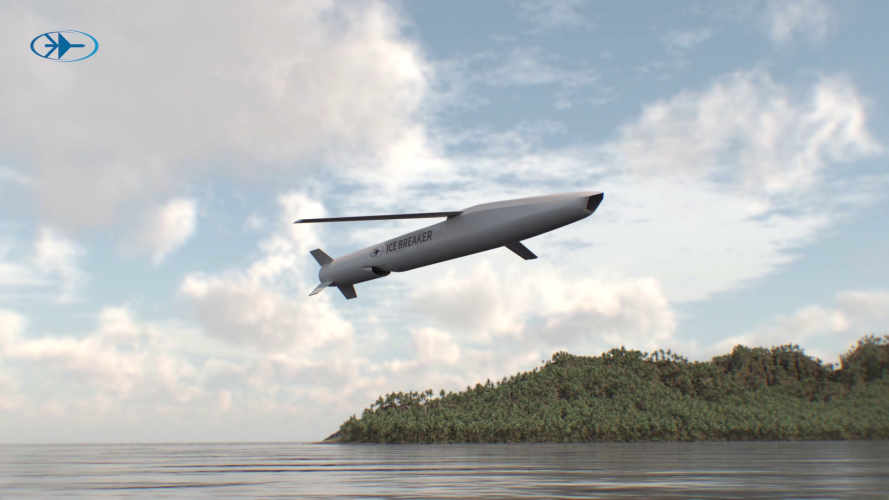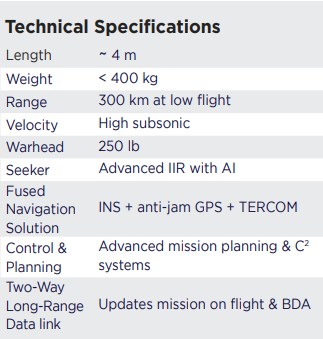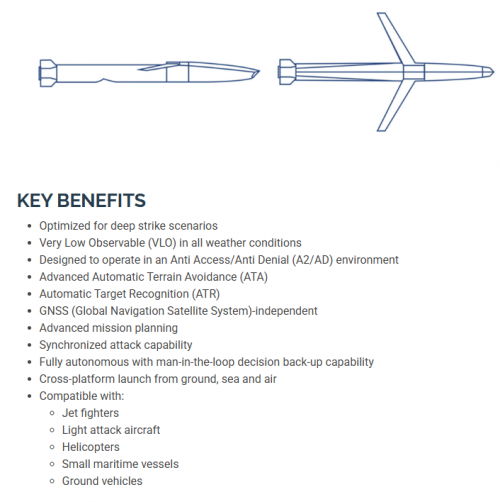Big_Zukini
ACCESS: Confidential
- Joined
- 23 November 2024
- Messages
- 135
- Reaction score
- 199
In 2021 Rafael unveiled the Sea Breaker, a 300km, 350kg missile with a 250lbs warhead and a stealth design.
A year later in 2022, Rafael unveiled the Ice Breaker, the main missile from which Sea Breaker was derived.
It was reportedly unveiled only after the Sea Breaker because of censorship. Although Rafael said they're still in negotiations over sales and that it's primarily made for export, the censorship on one variant is likely an indicator the IAF is also a customer. Its stealth design and General Atomics' statement today indicate with high probability that the Ice Breaker is integrated into IAF F-35I.

Unfortunately I cannot find the source, but in a clip shown on TV of officials touring a Rafael facility, there was footage of Ice Breaker's assembly line, so it's already in production as of 2025.
Link to unveiling of Ice Breaker in 2022:

 www.defensenews.com
www.defensenews.com
Link to Rafael's Ice Breaker page:

Today, 7th of April 2025, General Atomics announced they're partnering with Rafael to bring the Ice Breaker, renamed Bullseye, to the US market to fulfill both domestic needs and for FMS.
They reveal that an F-35 can fit 4 Bullseyes in its internal weapons bay.
Clarification: I saw one of the articles saying it could fit 4 in an F-35 internal bay, but I can't seem to find it now. So ignore it.
Rafael goes particularly hard on the affordability strategy with products like Iron Dome, David's Sling, and now the Ice Breaker though without providing exact cost.
Sorry I'm not an acronym fan so I don't know what programs the US has for affordable cruise missiles but this could be a solid contender in these if my theory it's already in operational use by IAF is true.
Link to announcement:

Link to product page:


Little bonus:
EDR say the Ice Breaker can be fitted with either a 250lbs or 500lbs warhead, and now TWZ also confirm it.

 www.edrmagazine.eu
www.edrmagazine.eu
A year later in 2022, Rafael unveiled the Ice Breaker, the main missile from which Sea Breaker was derived.
It was reportedly unveiled only after the Sea Breaker because of censorship. Although Rafael said they're still in negotiations over sales and that it's primarily made for export, the censorship on one variant is likely an indicator the IAF is also a customer. Its stealth design and General Atomics' statement today indicate with high probability that the Ice Breaker is integrated into IAF F-35I.

Unfortunately I cannot find the source, but in a clip shown on TV of officials touring a Rafael facility, there was footage of Ice Breaker's assembly line, so it's already in production as of 2025.
Link to unveiling of Ice Breaker in 2022:

Rafael unveils once-secret Ice Breaker missile
A Rafael official told Defense News the missile is nearing full-scale development and that the company has spoke with customers on three different continents regarding potential contracts.
Link to Rafael's Ice Breaker page:

Today, 7th of April 2025, General Atomics announced they're partnering with Rafael to bring the Ice Breaker, renamed Bullseye, to the US market to fulfill both domestic needs and for FMS.
They reveal that an F-35 can fit 4 Bullseyes in its internal weapons bay.
Clarification: I saw one of the articles saying it could fit 4 in an F-35 internal bay, but I can't seem to find it now. So ignore it.
Rafael goes particularly hard on the affordability strategy with products like Iron Dome, David's Sling, and now the Ice Breaker though without providing exact cost.
Sorry I'm not an acronym fan so I don't know what programs the US has for affordable cruise missiles but this could be a solid contender in these if my theory it's already in operational use by IAF is true.
Link to announcement:

General Atomics Partners with Rafael to Build Precision-Guided Missile for U.S. Defense Customers
General Atomics Electromagnetic Systems (GA-EMS) announced today that they have signed a Memorandum of Understanding (MOU) with Rafael Advanced Defense Systems Ltd., Israel to be their partner and the U.S. prime contractor to manufacture a long-range, precision-guided strike missile.
www.ga.com
Link to product page:

Bullseye
Introducing Bullseye™, a long range, precision-guided missile enabling significant attack performance against high-value targets at an affordable cost.
www.ga.com

Little bonus:
EDR say the Ice Breaker can be fitted with either a 250lbs or 500lbs warhead, and now TWZ also confirm it.

PAS 2023 - Rafael evolves its airborne weaponry and introduces a new air-to-air 6th generation missile - EDR Magazine
A 6th generation air-to-air missile being was unveiled by Rafael at the 2023 Paris Air Show.
Last edited:




